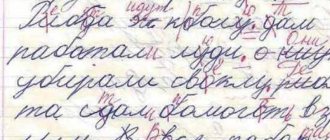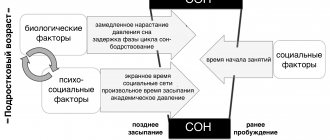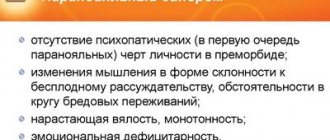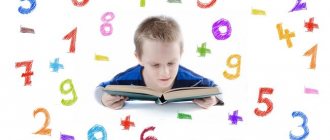Dysgraphia is a written language disorder. Signs and symptoms of deviation, treatment and methods of prevention - what parents of schoolchildren should know.
Children who have just started learning to write try to write neatly. However, the handwriting of most primary school children is clumsy and illegible. Many people write with errors because they do not yet know the basic rules of the Russian language. A child's written speech improves over time, but some children continue to write sloppily, changing letters in places, missing spaces and in the right places. There are a number of signs that should cause parents to become concerned and take their child to see a speech therapist, as they may be symptoms of dysgraphia.
Timely treatment of this disorder is the key to the fact that the child will have competent written speech in the future. That is why it is important to know what dysgraphia is, what its causes and main symptoms are, as well as how this deviation is treated.
Dysgraphia: general information
Dysgraphia is a writing disorder that involves crooked letter writing with multiple misspellings of words. The handwriting of a child with this disorder is illegible, and words may be written in reverse with a large number of grammatical errors. This defect is a consequence of disruption of certain parts of the brain.
Writing impairment, the causes of which lie in the improper functioning of certain parts of the brain, occurs in many children who are beginning to learn the basics of writing. Thus, among second grade students, on average, such a violation occurs in more than half of the class. In the absence of timely treatment, such a deviation entails a decrease in the child’s self-esteem, affects his academic performance, and affects relationships with peers.
Dysgraphia is often accompanied by minor problems with the speech apparatus. This violation has several types and is classified according to severity.
Forms and signs of dysgraphia
Ekaterina Markelova
Forms and signs of dysgraphia
As they begin school, some children suddenly develop difficulties with reading and writing. The guys find themselves at odds with the Russian language, although they do well in mathematics and other subjects where, it would seem, more intelligence is required. Sooner or later, such “smart” ones, but lacking speech talent, are sometimes referred to a speech therapist. More often to a psychologist, which is not entirely correct.
Dysgraphia is a partial specific writing disorder.
Etiology of dysgraphia
The issue of the etiology of dysgraphia is still controversial. Many scientists (M. Lamy, C. Lonay, M. Soule)
hereditary predisposition is noted. They believe that this is due to the fact that children inherit from their parents qualitative immaturity of the brain in its individual zones. This immaturity manifests itself in specific delays in the development of a certain function.
But most researchers studying the etiology of dysgraphia note the presence of pathological factors affecting the prenatal, natal and postnatal periods. The etiology of dysgraphia is associated with the influence of biological and social factors.
Functional causes may be associated with internal effects (for example, long-term somatic diseases)
and external (incorrect speech of others, lack of speech contacts, bilingualism in the family, insufficient attention to the child’s speech development on the part of adults) factors that delay
the formation of mental functions involved in the reading process.
Dysgraphia is often caused by organic damage to areas of the brain involved in the writing process. (Alalia, dysarthria, aphasia)
.
Writing disorders are very common in children with MMD, ODD, mental retardation, mental retardation, and ADD.
Thus, the etiology of dysgraphia involves both genetic and exogenous factors (pathology of pregnancy, childbirth, asphyxia, a “chain” of childhood infections, head injuries).
Speech symptoms of dysgraphia
With dysgraphia , children in primary school have difficulty mastering writing: their dictations and the exercises they complete contain many grammatical errors. They don't use capital letters, punctuation, and have terrible handwriting. In middle and high school, children try to use short phrases with a limited set of words when writing, but when writing these words they make gross mistakes. Often children refuse to attend Russian language classes or complete written assignments. They develop a sense of their own inferiority, depression, and are isolated in the group. Adults with a similar defect have great difficulty composing a greeting card or a short letter; they try to find a job where they do not have to write anything.
In children with dysgraphia, individual letters are incorrectly oriented in space. They confuse letters that are similar in style: “Z” and “E”, “P” and “b” (soft sign)
.
They may not pay attention to the extra stick in the letter “Ш” or the “hook” in the letter “Ш”. Such children write slowly and unevenly; If they are not in the mood, then the handwriting becomes completely upset.
Non-speech symptoms of dysgraphia
In dysgraphic children, many mental functions are undeveloped : visual analysis and synthesis, spatial representations, auditory-pronunciation differentiation of speech sounds, phonemic, syllabic analysis and synthesis, lexico-grammatical structure of speech, memory disorders, attention, successive and simultaneous processes, emotional volitional sphere.
Mechanism of dysgraphia
To understand the mechanism of dysgraphia , I’ll start from afar. We are known to have at least three types of hearing. The first hearing is physical. It allows us to distinguish the noise of leaves and rain, summer thunder, the buzz of a bee, the squeak of a mosquito, as well as urban sounds: the hum of an airliner, the clatter of train wheels, the rustling of car tires. The second type is musical ear. Thanks to this, we can enjoy the melody of our favorite song and the beautiful music of great composers. Finally, the third type is speech hearing. You can have a good ear for music and a very poor ear for speech. The latter allows you to understand speech, capture the subtlest nuances of what is said, and distinguish one sound from another. If speech hearing is insufficient, similar consonances cannot be distinguished, and spoken speech is perceived distorted.
If a child has impaired speech hearing, then, of course, it is very difficult for him to learn to read and write. In fact, how can he read if he can’t hear the speech clearly? Is he also incapable of mastering writing? Is he unable to hear spoken speech clearly? He is also unable to master writing, since he does not know what sound this or that letter represents. The task is further complicated by the fact that the child must correctly grasp a certain sound and represent it in the form of a sign (letter)
in the rapid flow of speech he perceives. Therefore, teaching literacy to a child with defective speech hearing is a complex pedagogical problem.
But it is necessary to learn, because the distortion of one or two sounds changes the meaning of the word. Compare, for example, the words “daughter-dot”, “coal-corner”, “stick-beam”, “cup-Sashka”. Replacing a dull sound with a voiced sound, a hard sound with a soft sound, a hissing sound with a whistling sound gives the word new content.
Along with speech (phonemic)
Hearing people have a special vision for letters.
It turns out that simply seeing the world around us (light, trees, people, various objects)
is not enough to master writing. It is necessary to have vision for letters, allowing you to remember and reproduce their outlines.
This means that for full-fledged education, a child must have satisfactory intellectual development, speech hearing and special vision for letters. Otherwise, he will not be able to successfully master reading and writing. It is no coincidence that psychoneurologists and speech therapists, when meeting a low-achieving schoolchild, carefully study the contents of his notebooks, his handwriting, and the peculiarities of his speech. Often, a child’s low academic performance is explained not by the state of his intelligence, but by the presence of specific writing disorders, which I am talking about. Of course, only a specialist can recognize such disorders. Which area of the brain is responsible for writing? It turns out that the center of speech for most people is in the left hemisphere. The right hemisphere of the brain “manages” object symbols and visual images. Therefore, among peoples whose writing is represented by hieroglyphs (for example, the Chinese, the right half of the brain is better developed. Writing and reading among Chinese residents, unlike Europeans, will suffer if there is a problem on the right (for example, with a cerebral hemorrhage)
.
dysgraphics have good drawing abilities . Such a child has difficulty mastering writing, but receives praise from the art teacher. This is as it should be, because in this child the more “ancient”, automated area of the right hemisphere is not altered in any way. Problems with the Russian language do not prevent these children from “explaining themselves” with the help of drawings (as in ancient times - through images on rocks, birch bark, and clay products).
Speech therapists sometimes pay attention to the “mirror” nature of patients’ writing. In this case, the letters are turned in the other direction - as in the image in a mirror. Example: “C” and “Z” open to the left; “Ch” and “R” are written in the other direction with their prominent part. Mirror writing is observed in various disorders, however, with such a phenomenon, the doctor looks for obvious or hidden left-handedness. He searches and often finds: mirror reversals of letters are a characteristic feature of left-handers.
There are 5 forms of dysgraphia :
1. Articulatory-acoustic form of dysgraphia .
2. Its essence is as follows: A child who has a violation of sound pronunciation, relying on his incorrect pronunciation, fixes it in writing. In other words, he writes as he pronounces. This means that until the sound pronunciation is corrected, it is impossible to correct writing based on pronunciation.
3. Acoustic form of dysgraphia .
4. This form of dysgraphia manifests itself in the substitution of letters corresponding to phonetically similar sounds. At the same time, in oral speech, sounds are pronounced correctly. In writing, letters are most often mixed, indicating voiced - unvoiced (B-P; V-F; D-T; Zh-Sh, etc., whistling - hissing (S-Sh; Z-Zh, etc., affricates and components included in their composition (CH-SH; CH-TH; C-T; C-S, etc.)
.
5. It also manifests itself in the incorrect designation of the softness of consonants in writing: “pismo”, “lubit”, “bolit”, etc.
6. Dysgraphia due to a violation of language analysis and synthesis.
7. The following errors are most typical for this form of dysgraphia :
• omissions of letters and syllables;
• rearrangement of letters and (or)
syllables;
• underwriting of words;
• writing extra letters in a word (this happens when a child, while pronouncing while writing, “sings the sound” for a very long time;
• repetition of letters and (or)
syllables;
• contamination - in one word there are syllables of different words;
• continuous writing of prepositions, separate writing of prefixes (“on the table”, “on stepped”)
;
This is the most common form of dysgraphia in children suffering from written language disorders.
8. Agrammatic dysgraphia .
9. Associated with underdevelopment of the grammatical structure of speech. The child writes ungrammatically, that is, as if contrary to the rules of grammar (“beautiful bag”, “fun day”)
. Agrammatisms in writing are noted at the level of words, phrases, sentences and text.
10. Agrammatic dysgraphia usually manifests itself from the 3rd grade, when a student who has already mastered literacy “closely” begins to study grammatical rules. And here it suddenly turns out that he cannot master the rules of changing words according to cases, numbers, and gender. This is expressed in incorrect spelling of the endings of words, in the inability to coordinate words with each other.
11. Optical dysgraphia .
dysgraphia based on insufficient development of visual-spatial concepts and visual analysis and synthesis. All letters of the Russian alphabet consist of a set of the same elements (“sticks”, “ovals”)
and several “specific” elements. Identical elements are combined in different ways in space and form different letter signs: i w q sch; b c d u….
13. If a child does not grasp the subtle differences between letters, then this will certainly lead to difficulties in mastering the outline of letters and to incorrect representation of them in writing.
14. Errors most common in writing:
• underwriting of letter elements (due to underestimation of their number)
: L instead of M; X instead of F, etc.;
• adding extra elements;
• omissions of elements, especially when connecting letters that include the same element;
• mirror writing of letters.
What to pay special attention to:
1. If your child is left-handed.
2. If he is a retrained right-hander.
3. If your child attended a speech therapy group.
4. If the family speaks two or more languages.
5. If your child went to school too early (learning to read and write unjustifiably earlier sometimes provokes the occurrence of dysgraphia and dyslexia .) This happens in cases where the child has not yet reached the psychological readiness for such learning.
6. If your child has problems with memory, attention
7. Mixing letters by optical similarity: b-p, t-p, a-o, e-z, d-u.
8. Errors caused by impaired pronunciation, the child writes what he says: leka (river, suba (fur coat)
.
9. With impaired phonemic perception, the vowels o-u, e-yu, consonants r-l, y-l, paired voiced and voiceless consonants, whistling and hissing, sounds ts, ch, shch are mixed. For example: tynya (melon, klekva ( cranberry)
.
10. Omissions of letters, syllables, unfinished words. For example: prta - desk, moko - milk, cheerful (cheerful)
.
Dysgraphia never comes out of nowhere! Work to eliminate dysgraphia should begin not at school, when specific errors in writing are discovered, but in preschool age, long before the child begins to learn to read and write.
Children suffering from dysgraphia need special speech therapy help, since specific writing errors cannot be overcome by conventional school methods. It is important to consider that dysgraphia is much easier to prevent than to eliminate.
Early prevention measures for dysgraphia include the targeted development in a child of those mental functions that are necessary for normal mastery of the processes of writing and reading. I would like to pay special attention to such a problem as
Dysorphography
Manifested by a persistent inability to master spelling skills (despite knowledge of the relevant rules)
.
The main difficulties are detecting spellings and solving spelling problems. Spelling patterns with unstressed vowels at the end of words are especially difficult.
Dysorthography is a special category of specific writing disorders that expresses the relationship between words in a sentence.
With dysorthography o. (A. N. Kornev)
Is it possible to effectively help children with dyslexia and dysgraphia ?
Yes, such children are quite capable of mastering reading and writing if they study persistently. Some will need years of study, others months. The essence of the lessons is training speech hearing and letter vision.
Who can teach a child to read and write?
Mom and dad are unlikely to succeed; they need the help of a specialist - a qualified speech therapist.
Classes are conducted according to a specific system: various speech games, a split or magnetic alphabet for adding words, and highlighting the grammatical elements of words are used. The child must learn how certain sounds are pronounced and which letter this sound corresponds to when writing. Typically, a speech therapist resorts to contrasts, “working out” how hard pronunciation differs from soft pronunciation, and dull pronunciation from voiced pronunciation. Training is carried out by repeating words, dictation, selecting words based on given sounds, and analyzing the sound-letter composition of words. It is clear that they use visual material to help remember the shapes of the letters: “O” resembles a hoop, “F” - a beetle, “S” - a crescent. Strive to increase your reading and writing speed
1. If a child is assigned to read a text at home or write a lot, then break the text into parts and complete the task in several steps.
2. Do not force your child to rewrite homework many times; this will not only harm the child’s health, but also instill in him insecurity, and also increase the number of mistakes.
3. Praise your child for every success achieved, humiliate him as little as possible.
A few words about handwriting
The handwriting of a dysgraphic person is an expression of all his difficulties.
As a rule, in a dysgraphic person two types of handwriting stand out quite sharply: one is small, beady and “beautiful”; the other is huge, clumsy, clumsy, “ugly.”
So here it is:
In this case, there is no need to chase beauty, it will come on its own. As experience shows, clumsy and huge letters are precisely what a child should ultimately come to and work on. This handwriting is his real face, the face of an honest first-grader who wants and can learn (our first-grader, by the way, can be 10 or 16 years old, we are talking about the psychological age of learning to write).
So, DOWN with the beaded chain of letters, LONG LIVE the sweeping handwriting, for the entire line, or maybe one and a half!
Everything is quite simple here.
For some time (usually two to three weeks is enough)
in a notebook. A paragraph of text from any work of fiction or an exercise from a SMALL SIZE textbook is copied into the CELL EVERY DAY. The text, which is VERY IMPORTANT, is rewritten in CELLS, ONE LETTER PER CELL, THE LETTER MUST OCCUPY THE WHOLE CELL!
The psychological preparation of the child for classes is also important here.
If there is an unfavorable psychological atmosphere, if you practice “under pressure”, there may be no results.
The volume of text, I emphasize once again, should be small; for a child under ten years old it can be only one line a day, but it should be clearly rewritten. The overall goal is to prevent the slightest disgust, fatigue, or even dissatisfaction with yourself!
There are tricks to choosing stationery for .
Massaging your fingertips is important for proper brain function when writing. This is what I recommend to ALL speech therapists. Therefore, it is good if the place of “grip” of the writing object (pen or pencil)
covered with ribs or pimples.
But it’s even better if the student is comfortable holding this very pen, then the handwriting is more likely to stabilize. And for this, the body must be triangular. Take a look at these pens and pencils for dysgraphics with a triple section to support three holding fingers:
More details on the Staedtler website (pens)
More details on the Staedtler website (pencils)
Triangular pencils and felt-tip pens Centropen
Unfortunately, I have not yet seen both “conveniences” combined: the triangle and the pimples. So buy a bubble pen and a triangular pencil.
I would also like to note that stationery that has some special features will be a source of little pride for the child in front of his classmates, which can at least slightly smooth out school failures.
Girls often like to buy pens with multi-colored, shiny, etc. paste, fortunately they can write with them (in music lessons, labor lessons, etc.)
allowed.
So let it be better that the value of a pen in a child’s eyes be a beautiful, colored, unusually shaped body than a colored gel that makes it dazzle in the eyes and in the notebook.
When buying a pen, check how it writes and whether the ink bleeds through to the other side of the page.
Gel pens are considered the most suitable for dysgraphics (pressure is felt, but in first grade they will most likely be prohibited from using them: they often leak, freeze, and spoil.
Therefore, at home, it is useful for even the youngest to play a medieval scribe - to practice writing with a feather and ink (if parents do not know how, you can ask your grandparents). In the near future I will make inquiries about the availability of fountain pens in stores. “Pen” writing forms the correct position of the hand relative to the surface of the paper. (At the same time, it is true that there is a fascinating opportunity to get smeared in ink and smear your notebook, table, nose, knees, etc., so be careful.)
Mechanism of occurrence, causes
Writing is a process that requires the coordinated work of the visual, auditory, speech and motor systems. By the time the child masters the basics of writing, he should have mastered oral speech well. If the lateralization of brain functions is not carried out as needed, then a disorder such as dysgraphia develops. Usually these processes are normalized by the time the child begins school.
If the delay in lateralization causes disturbances in a part of the brain, the child develops dysgraphia, which requires correction. Otherwise, the deviation may affect the child’s thinking, memory, and perception.
Causes of occurrence in children
Dysgraphia can be caused by birth trauma. The development of such deviations is provoked by various infectious diseases and improper upbringing. Also, experts do not exclude such a factor as genetic predisposition.
Dysgraphia in children may be accompanied by other concomitant diseases that were previously diagnosed.
Causes of occurrence in adults
In adults, imperfections in written speech can be caused by both internal and external factors. Main reasons for deviation:
- presence of a tumor in the brain;
- low saturation;
- stroke;
- previous brain surgery;
- poor social conditions.
Social factors include insufficient upbringing in childhood, incorrect speech of people around, and lack of communication with others.
With dysgraphia, errors in the process of writing are persistent, despite the fact that the person knows well all the rules of writing words.
What is dysgraphia
Dysgraphia is a pathological condition in which there is a disorder in the writing process. About 50% of primary schoolchildren and approximately 35% of secondary school students are familiar with this disease firsthand. This pathology can also develop in adults (10% of all cases), in whom the functioning of higher mental functions has been impaired for some reason. In addition, this disorder is closely related to dyslexia, a deviation in the reading process, because both reading and writing are two components of one mental process.
Types of dysgraphia
Dysgraphia can be the result of various reasons. Signs and symptoms of the disorder may vary. The method of rehabilitation and duration of treatment also depend on the type of deviation.
Optical
It is difficult for a child to write letters correctly; he may skip them when writing words, or add unnecessary elements in the form of strokes and sticks. Due to incompletely formed visual-spatial connections, the child often misses letters, writes them incorrectly, and confuses them with others.
Acoustic
Characterized by a lack of ability to correctly recognize sounds. The patient confuses similar-sounding letters and may make mistakes in the degree of softness of the pronounced sounds.
Articulatory-acoustic
The child writes and pronounces letters incorrectly and replaces them with similar sounds. Requests from parents and teachers to pay attention to the correct pronunciation and spelling do not bring results. With this form of disorder, work aimed at auditory differentiation of the child is required. Only by carrying out such corrective work is it possible to completely get rid of the problem.
Ungrammatical
This type of violation is characterized by the fact that the child, when pronouncing and writing, confuses case endings, misses or replaces prepositions with others. This deviation is a consequence of speech disorders.
Disorder caused by defective processes of analysis and synthesis
The main symptoms of this disorder are omitting or replacing letters with others, adding extra syllables, and spelling several words in a row. Such a deviation is preceded by social, psychological, and educational factors, which become the main cause of disturbances in the analysis and synthesis of speech.
Signs of the disease
Dysgraphia is a diagnosis that should be made by a specialist. The deviation can easily be confused with a common misunderstanding of grammar that occurs in most children. With dysgraphia, the mistakes that a child makes while writing are in no way related to the level of knowledge of the Russian language. The teacher at school, as well as the student’s parents, should be wary if the child repeatedly makes the same mistakes: misses letters, confuses the combined and separate spelling of words. In addition, such a child’s handwriting is illegible, and the size of the letters constantly changes from small to large, not only in one sentence, but also in one word. The writing speed is very slow. Often, children with dysgraphia are given poor grades due to mistakes and poor handwriting, which greatly affects the child’s academic performance and self-esteem. That is why it is very important to promptly identify a violation of written speech in a child, find out the cause of the deviation in order to undergo a course of correction.
Causes of dysgraphia
Despite in-depth study, the causes of dysgraphia have not been clarified with 100% accuracy even today. But certain data is still available. For example, the above-mentioned scientists say that writing disorder can be caused by:
- Biological causes : heredity, damage or underdevelopment of the brain at different periods of the child’s development, pregnancy pathologies, fetal trauma, asphyxia, serious somatic diseases, infections affecting the nervous system.
- Socio-psychological reasons : hospitalism syndrome (disorders caused by a person’s long stay in a hospital away from home and family), pedagogical neglect, lack of speech contacts, upbringing in bilingual families.
- Social and environmental reasons : excessive literacy requirements for the child, incorrectly determined (too early) age of learning to read and write, incorrectly chosen pace and teaching methods.
As you know, a person begins to master writing skills when all the components of his oral speech are adequately formed: sound pronunciation, lexico-grammatical component, phonetic perception, speech coherence. If, during the formation of the brain, the disorders mentioned above occurred, the risk of developing dysgraphia is very high.
It is equally important to note that dysgraphia affects children with various functional impairments of the organs of hearing and vision, which cause deviations in the analysis and synthesis of information. And in adults, the impetus for the development of pathology can be strokes, traumatic brain injuries, neurosurgical interventions and tumor processes in the brain. Having a certain impact on human development, one or another of the above factors lead to dysgraphia, which can manifest itself in different forms.
Diagnosis of dysgraphia
Only a specialist who has previously diagnosed the disorder using special studies can prescribe an appropriate course for dysgraphia correction. In addition, consultation with specialists such as a neurologist and speech therapist is necessary to make a diagnosis.
The examination of the patient includes several stages, the first of which is to assess the condition of the central nervous system, vision, and hearing of the patient. Then specialists analyze the child’s articulation and motor skills. Important stages include assessing sound pronunciation, vocabulary, and literacy level. A writing assessment is then required, with experts taking into account whether the patient is right-handed or left-handed.
For the purpose of research, the child will be asked to write down words under dictation, rewrite capital and printed letters, and perform special exercises. After analyzing the information obtained during the study, the speech therapist makes a diagnosis and gives the necessary recommendations on how to correct written speech disorders, if any.
Diagnostic rules
To distinguish a speech disorder from a somatic pathology, the child is referred for a consultation with an otolaryngologist (to rule out hearing impairment), an ophthalmologist (to check vision), and a neurologist (to check for pathologies of the central nervous system). A speech therapist-defectologist gives an opinion on the development of speech skills.
The main goal of speech therapy diagnostics is to distinguish between a speech disorder and ignorance of grammar.
Diagnostics is carried out in stages:
- Familiarization and evaluation of essays, presentations, dictations.
- Analysis of intellectual development and formation of the speech apparatus.
- Exclusion of neurological and ENT pathologies.
- Studying the vocal apparatus, fine motor skills, identifying the dominant hand.
Repeated errors identified in written assignments are recorded in the protocol and analyzed. Based on the test results, the speech therapist makes a conclusion.
Methods for correcting dysgraphia
The method of correction depends on the severity of the child’s written language impairment. In addition, the method of treating the deviation is influenced by the degree of neglect, as well as the characteristics of the patient. Correction is a long and complex process that requires persistence on the part of teachers and parents, patience, endurance and a positive attitude of the patient. If you follow all the necessary recommendations, dysgraphia can be completely cured. It is better if the disorder is diagnosed at an earlier age, since the course of correction for older schoolchildren is longer due to the presence in most cases of additional speech and writing disorders. In this case, the time required for rehabilitation will take more. There is also a high risk that the violation cannot be eliminated completely.
It is impossible to get rid of dysgraphia on your own. This process requires the participation of many highly specialized specialists, for example, a psychologist, a neuropsychologist. However, the main work falls on the speech therapist, who will have to select a rehabilitation program appropriate to the severity of the disease and the individual characteristics of the patient. The specialist individually selects the necessary sound pronunciation exercises. Classes are aimed at improving motor skills, developing the patient’s lexical and grammatical structure, as well as improving phonemic speech recognition.
Methods for correcting dysgraphia, which are among the most effective:
- Exercises through which the patient learns to correctly understand sounds, words, and letters.
- Tasks aimed at training memory, improving thinking, and developing perception.
- Exercises necessary for the patient to learn to correctly recognize letters that are similar in appearance.
- Proper production of sounds, work on speech automation.
- Educational games to improve sound analysis.
In some cases, specialists include drug treatment, physiotherapy, massage, and exercise therapy in the rehabilitation course. This often applies to patients whose dysgraphia was caused by organic causes. It is important to know that drug treatment should be prescribed exclusively by a qualified specialist.
Speech therapy correction
Auditory differentiation of sounds is what needs to be achieved initially when treating dysgraphia. If a child cannot distinguish sounds, then further exercises will not be effective. The rehabilitation period is determined individually and depends on many factors. Classes with a speech therapist are possible both in a group with other children and individually. It depends on the wishes of the child and his parents.
During classes, the speech therapist gives the child verbal and visual exercises, as well as practical lessons, during which correctional work takes place.
Exercises you can do at home
Since it is impossible to get rid of dysgraphia on your own, experts, in addition to basic classes, recommend doing additional exercises at home to consolidate the results obtained with a speech therapist.
Exercises that can be done at home should also be agreed upon with a speech therapist. It is important that parents supervise the technique and regularity of classes. The simplest but most effective exercises that you can do at home with your parents include:
- Labyrinth. The child draws a line on a piece of paper, moving only his hand. You cannot make breaks or change the position of the sheet.
- Search for objects or pictures. The child searches for and paints the objects found.
- Exercises aimed at developing attention. The child must read the text and look for missing letters or words, writing them in the right places.
- Improved articulation. The child learns songs, rhymes, and tongue twisters.
- Logorhythmics.
To get a positive result as quickly as possible, home exercises should be performed regularly. This will significantly shorten the rehabilitation period.
Forecast and preventive measures
For the correction of dysgraphia to be successful, it will require the coordinated work of a speech pathologist, the student, his parents and, if necessary, a neurologist. Without speech therapy intervention, writing disorder cannot be eliminated. Children don't outgrow it.
Prevention of the disorder is recommended to begin in infancy. It includes the development of higher mental processes, correct articulation, diction, auditory and visual memory, phonemic hearing, the ability to navigate in space and motor skills of the fingers.
It is important to identify and correct oral speech disorders as early as possible, eliminate phonemic, phonetic-phonemic and general underdevelopment of speech skills.
Assessing the writing and reading performance of a primary school student with dysgraphia remains problematic. During correction, it is recommended that the student’s work be checked jointly by the teacher and the speech pathologist in order to differentiate dysgraphic errors that are not taken into account when assessing academic performance.
Forecast, preventive measures
The prognosis for the treatment of dysgraphia depends on a number of factors: the timeliness of the measures taken, the severity of the deviation, its form, the reasons that provoked the formation of the written speech disorder, as well as the individual characteristics of the patient. Only through the well-coordinated work of specialists, the patience and perseverance of parents, as well as the positive attitude of the child, can a positive result be obtained in the end. The problem associated with impaired written speech can be completely corrected in more than 80% of cases.
Parents of a child who has been diagnosed with dysgraphia should be aware that the lack of a timely response can lead in the future to:
- Poor academic performance, which is fraught with intellectual retardation in the development of the child.
- The appearance of suspiciousness and anxiety.
- The emergence of problems with peers.
In addition, an advanced form of dysgraphia is the cause of a child’s deviant behavior and low self-esteem.
For a child with an advanced form of dysgraphia, the need to write something will always cause discomfort. This leads not only to poor academic performance, but also to a complete lack of desire to learn and master new material.
Is it possible to eliminate dysgraphia in a child?
Dysgraphia is a defect that can be corrected. Children with this pathology successfully develop, grow up and achieve success. This can be confirmed by famous people who were diagnosed with dysgraphia in childhood, including Albert Einstein, Walt Disney, Marilyn Monroe, Vladimir Mayakovsky and many others.
The key task of the parents of such a child is to attract a competent speech therapist-defectologist to solve this problem. A correction course is developed after determining the type of dysgraphia and the severity of the pathology. The speech therapist creates exercises that allow you to compensate for defects in the pronunciation of sounds, correct speech, form the recognition of sounds and letters, develop motor skills and other mental functions of the child.
Date of publication: 02/25/2019. Last modified: 05/05/2021.
Prevention of dysgraphia
Experts cannot name the exact causes of dysgraphia. In addition, it is believed that such a violation of written speech cannot be prevented. However, there are known risk groups whose representatives more often suffer from the presence of such a deviation. This:
- Bilingual children;
- Patients with mental retardation
- Children who were retrained to write with their right hand
- Hyperactive children
- Children who started learning too early
Prevention measures include training memory and attentiveness, increasing vocabulary. It is important to know that if a child constantly makes the same mistakes when writing words, there is no need to postpone visiting a speech therapist until later. If a child has a written speech disorder, the sooner correctional work is started, the faster and easier it will be to get rid of the problem, which is fraught with serious consequences for the child in the future.
How to fix a defect
The work of a speech pathologist is aimed at eliminating identified writing defects. Speech therapy exercises allow you to:
- improve pronunciation and diction;
- develop phonemic awareness (the ability to recognize individual phonemes in oral speech and syllables in written speech);
- enrich vocabulary;
- develop grammatical skills;
- develop coherent storytelling skills.
Correction of dysgraphia is impossible without improving the ability to perceive and analyze other people's speech (oral and written), navigate in space, develop memory and fine motor skills.
After practicing speaking skills, they move on to consolidating them in writing. If the cause of dysgraphia is a somatic disease, medication, physiotherapy, massage and exercise therapy are required.










